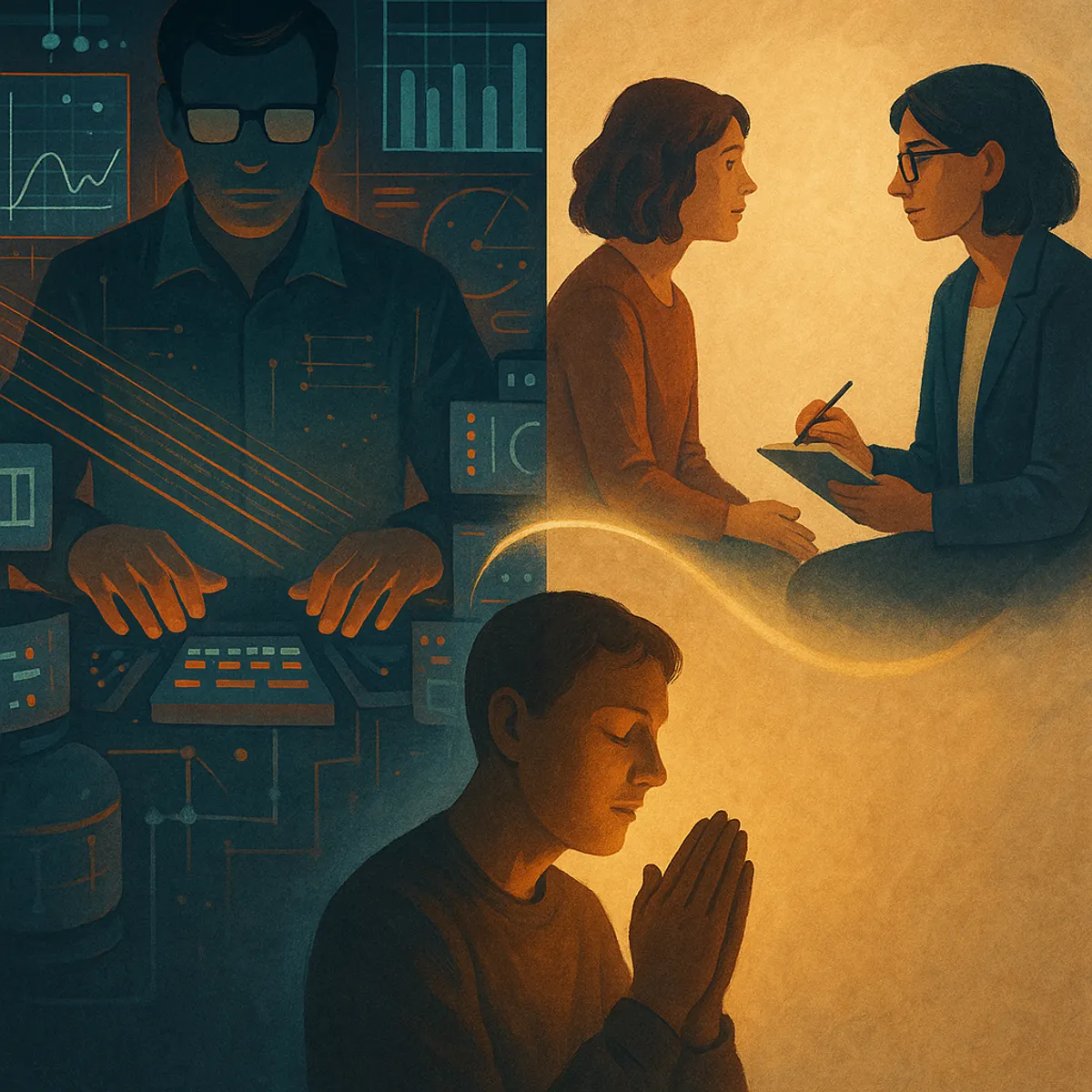
Who Really Observes?
- David Hamilton
- September 1, 2025
- 5 mins
- Faith Science
- featured hard science observation philosophy of science
When people say, “I believe in science,”
they usually mean the sciences with machines
and numbers attached—physics, chemistry,
cosmology, biology.
Those fields feel solid. Reliable. Precise.
But when it comes to psychology, sociology,
anthropology—or faith—people roll their eyes.
“Soft.”
“Subjective.”
“Unreliable.”
I want you to notice something, though.
At the beginning, science was not numbers
or models.
It was simply looking.
Galileo sketching moons.
Darwin watching birds.
Anatomists paying attention
to what lay before them.
Science began as careful noticing.
So let me ask you:
who still really observes?
The Hard Sciences
Physics. Chemistry. Cosmology.
No physicist has ever seen an electron.
They see traces on a screen.
No cosmologist has looked at a black hole.
They work with streams of data.
Biologists don’t see DNA with their eyes.
They see machine output.
These sciences are brilliant, astonishing.
But they don’t observe directly.
They rely on instruments,
software,
teams,
theories.
And here is the hidden piece: trust.
You have to trust the machine is calibrated.
Trust the software isn’t buggy.
Trust the team member entering numbers.
Trust the consensus that decides
what counts as “signal” and what is “noise.”
The “hard” sciences lean on
layers of mutual trust.
Isn’t it strange?
We think of them as the place
where trust is unnecessary,
because the facts are “hard.”
But in practice, the harder the science,
the more trust is required.
The Soft Sciences
Now look at psychology, anthropology, sociology.
A psychologist sits with someone—listens,
watches, notices.
An anthropologist eats with a community—
joins the rituals, pays attention.
A sociologist watches people in a café—
who sits where, who talks to whom.
These are direct encounters.
The raw presence of one human with another.
Of course, trust plays a part here too—
the trust between researcher and subject,
the willingness to be honest,
the humility to be seen.
But at the core, these fields
train you to look and listen
with your own senses.
In many ways, these “soft” sciences look more
like Galileo with his telescope than modern
physics does.
They still ask you to sit in the dirt.
To notice.
Faith
And faith?
At first glance, the opposite of science.
But faith traditions are also training
in observation.
They ask you to notice what stirs in your conscience.
To watch your inner movements.
To attend to awe, fear, reverence, joy.
To notice the patterns of ritual.
It is not measurement,
but it is still observation.
And yes—trust again.
Trust that what you sense inwardly
is not just illusion.
Trust the wisdom of teachers and elders.
Trust the patterns handed down
through generations.
Faith is trust married to observation.
The Inversion
Here’s the twist:
-
The “hard” sciences, celebrated as most objective,
do the least direct observing—
and depend the most on trust
in machines, in models, in colleagues. -
The “soft” sciences, teased as squishy,
still sit face-to-face with their subject.
They notice with their own eyes and ears. -
Faith, dismissed as unscientific,
practices some of the oldest observing disciplines we know—
and builds them on trust.
The categories we use—hard, soft,
objective, subjective—don’t fit
as neatly as we pretend.
A Step Further: Technology and Trust
I remember my dissertation defense
back in the late 90s.
I was explaining why my artificial neural network
was inscrutable.
I couldn’t say exactly what it was doing.
The mechanism was buried under
layers of distributed processing units.
It couldn’t explain itself.
And we couldn’t directly observe it
in any meaningful way.
We had to trust the outputs.
Now look where we are with AI.
We lean on large language models,
hoping they are being truthful with us,
even though they have no real comprehension of truth—
and the social implications
of breaking trust are enormous.
We continue to move farther into trust,
and farther away from observation.
Some call AI the last invention
humanity will ever make.
Maybe.
But either way, it is another sign
that the farther we go into “hard” sciences,
the deeper the role of trust becomes.
Why This Matters
Because it helps us see our blind spots.
When someone says they “believe in science,”
they often mean they trust fields
that are least empirical in the old sense.
And when they dismiss psychology or faith,
they are dismissing the very things
still closest to presence.
Machines can help, yes.
But they can’t notice for us.
And even in physics, cosmology,
and now artificial intelligence,
you are already practicing faith—
faith in your colleagues,
faith in your instruments,
faith in your models,
faith in your machines.
Isn’t That Interesting?
None of this means physics is worse
or psychology is better.
It just means we should pause before assuming
our slogans tell the truth.
Maybe the real strength isn’t in hardness.
Maybe it’s in staying close—
close to data,
close to people,
close to the small movements of the heart.
And maybe it’s also in recognizing
that trust—
the thing we thought only belonged
to relationships and religion—
quietly runs through
the very sciences we call “hard.”
Isn’t that interesting?